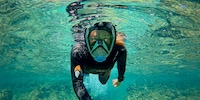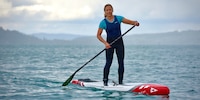

Will Prolimit’s neoprene-free wetsuit keep you warm, even in winter?
Neoprene-free wetsuits? Sounds crazy. But this is exactly what the Dutch brand Prolimit’s offering across all its water sports suits from this year onwards. To find out whether such a suit performs even in sub-zero temperatures, I put one through its paces on the surf wave in Munich and on Swiss lakes.
For a long time now, the water sport season has been comprising more than just the summer months. Thicker, lined and more flexible wetsuits make it possible at other times of the year. And even if I’m not drawn to the Lofoten Islands for winter surfing like the Arctic Surfer, I still made it to the O2 Surftown Munich, Europe’s biggest surf park in the north of Munich.
Here I want to test one of the new neoprene-free wetsuits from the Dutch brand Prolimit. With the cold in mind, I opt for the Mercury TR Hooded FreeX 6/4, a petroleum-free neoprene suit with a thickness of six millimetres on the torso and four millimetres on the arms and legs.
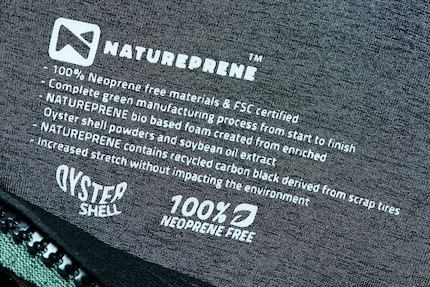
Source: Siri Schubert
Riding the wave at minus temperatures
Summer, sun and sand – none of which featured in my surfing trip in Munich. It’s December and almost all surf sessions are fully booked for that day. Luckily I can still get a spot at 5:45 pm. It’s already dark and the thermometer shows – 3 degrees, the water’s 5 degrees. A layer of ice has formed on the wide railings surrounding the wave pool.
As soon as I put it on, I notice how flexible the suit is. So stretchy in fact, it almost feels a little thin. For a moment I doubt whether it’s really suitable for these temperatures. The suit has a cosy, soft fleece layer inside made from recycled polyester, which gives me hope that it won’t be that cold after all.
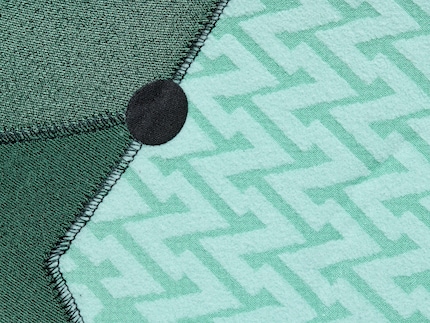
Source: Siri Schubert
A small zipper across the chest fastens the suit and is designed to prevent large amounts of water from getting in. It’s now a standard for wetsuits. The hood fits tightly, which should also protect me from the cold water.
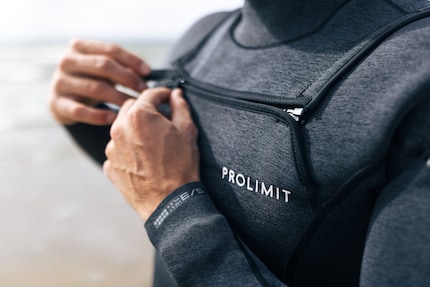
Source: Siri Schubert
Plunging into the cold
At the briefing before the surf session, I meet the other surfers clad in black stretchy stuff that I’ll be sharing the right-hand wave with. Six millimetre suits seem to be the standard for these temperatures, plus a hood, gloves and booties.
When I get into the surf pool, I’m pleasantly surprised. No water penetrates through the rubber and well-taped seams. My skin stays dry and warm for the most part. I just feel a little damp on my upper back and chest. And this doesn’t really change when I miss one of the waves and get whirled around in the white water.
The waves are timed so that I’m always on the move. There’s no waiting around, instead it’s a sequence of paddling, surfing and walking back to the entry point. This means you’re less likely to cool down. Your hands and feet may feel uncomfortably cold after a while, but your body stays warm. The same happens again the next day when I book another evening session on the wave.
On both occasions I stayed largely dry under the suit. Great! Even if there are hot showers on site, I’m dry enough to make my way back and have a shower at the hotel.
Also suitable for pumping
Back in Switzerland, I want to test the warming rubber clothing on my home waters. This time not on a wave, but pump foiling. As a beginner, I still fall in the water a lot. Here, too, I stay pleasantly warm during my hour-long exercise session. However, more water gets into the suit than when surfing. This is probably because I’m not diving into the white water when I fall, but deeper and with more momentum into the green water, where the pressure’s higher.
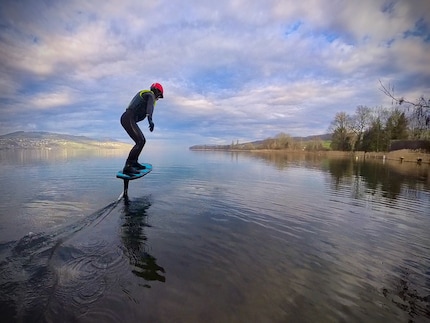
Source: Siri Schubert
I don’t notice any difference in flexibility compared to conventional wetsuits. The natural rubber suit offers enhanced freedom of movement, both for pop-ups when surfing and for explosive squats when pump foiling.
Why neoprene-free?
For some time, we’ve known that petroleum-based wetsuits keep you warm but aren’t exactly environmentally friendly. That’s why companies like Prolimit, Patagonia and Soöruz are trying to find alternatives.
Wetsuits based on limestone were a first step. But the big breakthrough never came. After all, limestone is extracted in mines, is non-renewable and affects the groundwater table. Although it’s more environmentally friendly than neoprene, a lot of energy’s needed to process it.
The journey towards sustainability continued with rubber. But it’s not all sunshine and rainbows with this material either. This is because rubber plantations can contribute to the deforestation of natural forests, even if the rubber trees themselves aren’t felled and can produce rubber for up to 30 years. In the past, organisations such as Greenpeace and others have questioned whether the Forest Stewardship Council (FSC) certification will bring about an improvement. The WWF recommends FSC-certified products.
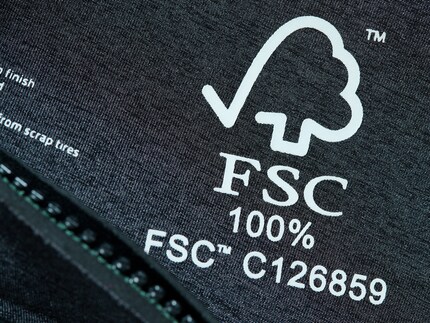
Source: Siri Schubert
For Prolimit, natural rubber is currently the best alternative. Unlike Yulex, which is also based on natural rubber, the Natureprene used by Prolimit claims to contain 82 to 90 per cent organic-based raw materials. In contrast, the figure for Yulex is 63 per cent.
Prolimit also uses oyster shells, soybean oil, recycled polyester and water-based dyes in its suits. In the dyeing process alone, the company says it saves 119 litres of water per suit, or 91 per cent, compared to traditional dyeing methods. And it’s announced that all of its wetsuits will be recyclable by 2026.
In a nutshell
Stretchy and warm for water sports in winter
Pro
- Made from renewable raw materials
- Hypoallergenic
- Suitable for winter surfing in the 6/4-millimetre version
- Elasticity enables enhanced freedom of movement
- Warm inner lining made from recycled polyester

Research diver, outdoor guide and SUP instructor – I love being in, on and around water. Lakes, rivers and the ocean are my playgrounds. For a change of perspective, I look at the world from above while trail running or flying drones.
